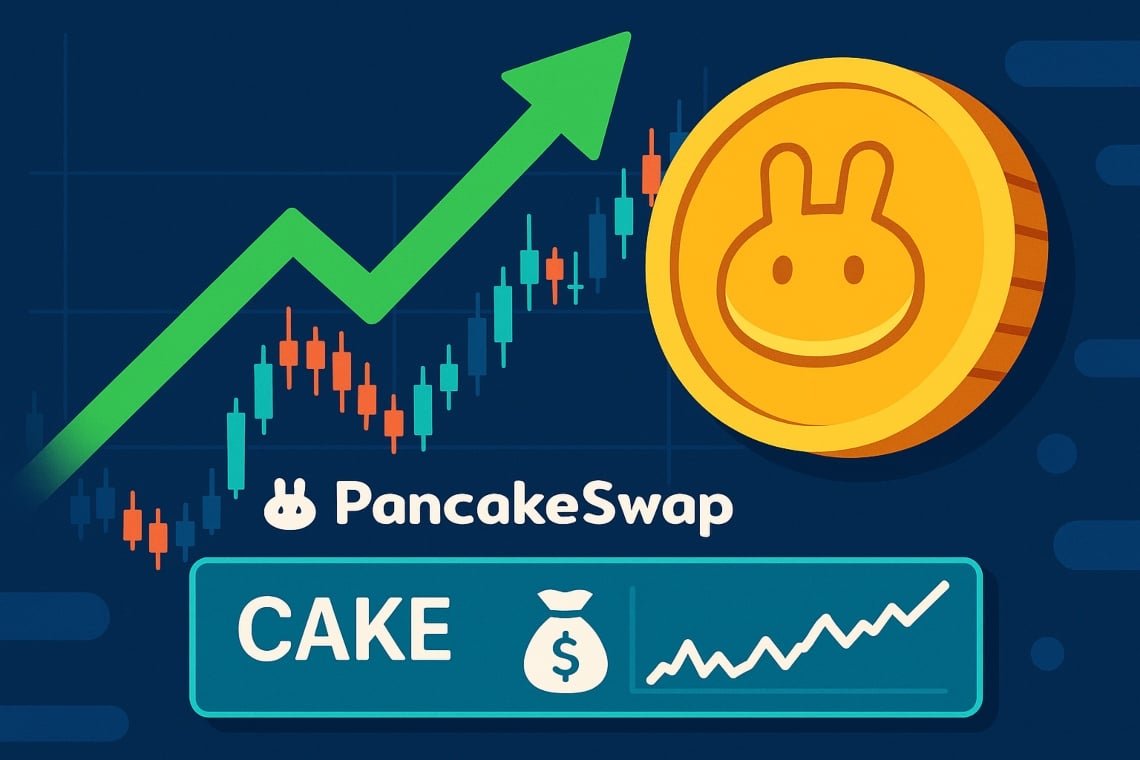PancakeSwap price surge has grabbed crypto market attention after a 28% jump to a 2025 high, sparked by fee-earning limit orders on BSC.
- Date: 2025-10-03
- Token: CAKE
- Exchange: PancakeSwap
- Chain: BSC
- Event: Fee-earning limit orders introduced
Why did PancakeSwap rally so sharply?
The rollout of pancakeswap fee limit orders is the primary catalyst. By letting traders earn fees when limit orders execute, the feature blends precise execution with passive income.
Consequently, some liquidity rotated back to PancakeSwap, while the broader increase in bsc dex trading volume on BSC helped amplify price discovery.
How do pancakeswap fee limit orders affect CAKE and cake token liquidity?
Fee-earning limit orders incentivize counterparties to post orders, which can deepen order books and compress spreads.
As a result, short-term price discovery for CAKE may improve and apparent cake token liquidity can rise. However, those gains depend on continued order flow and sustained demand, not just a one-off surge in trading.
Can CAKE reach $4?
Hitting a cake price target of $4 remains speculative. Some analysts point to stronger DEX activity and reduced execution frictions as supportive, but reaching $4 would require persistent buying pressure and limited sell-side liquidity.
Therefore, any pancakeswap price prediction should weigh both on-chain adoption and macro factors.
What technical and on-chain signals matter for cake token price?
Key indicators include CAKE’s momentum on price charts, liquidity depth across major pools, and net inflows to PancakeSwap.
In addition, monitor the fill-rate of fee-limit orders and on-chain concentration of CAKE holdings; these metrics reveal whether the rally is broad-based or driven by short-term positioning.
Practical takeaways: in production environments, trading desks typically test new order types in controlled settings and run on-chain monitors to verify fills and slippage before scaling exposure.
Similarly, institutions should require smart-contract audits and multi-signature custody when interacting with new DeFi features. “Refer to the PancakeSwap blog for implementation details,” PancakeSwap blog. “Observe regulatory guidance from the SEC when assessing custody and trading practices,” SEC.
What risks could reverse the rally?
Risks include a swift speculative unwind, deterioration in cake token liquidity, or adverse regulatory developments affecting BSC.
In addition, DEX-specific technical issues—such as bugs in new order-type contracts—could trigger abrupt outflows. Thus, investors should track execution stability and market depth closely.
What should traders and institutions watch next?
Focus on topline metrics: bsc dex trading volume, the adoption rate of pancakeswap fee limit orders, CAKE staking flows, and any changes to burning mechanics.
For added context, read our related analysis and historical coverage on PancakeSwap activity and wider market moves at PancakeSwap Infinity su Base: record di TVL, the technical guide at PancakeSwap cross-chain swap, regulatory context at SEC and Binance case coverage, and market sentiment signals in our Bitcoin rebound analysis.
Ultimately, while the 28% rally on 2025-10-03 put a spotlight on CAKE and PancakeSwap, the sustainability of gains will depend on measurable adoption of fee-limit orders and continued depth in BSC liquidity pools.
Traders should therefore combine on-chain metrics with traditional risk controls before adjusting exposure.
